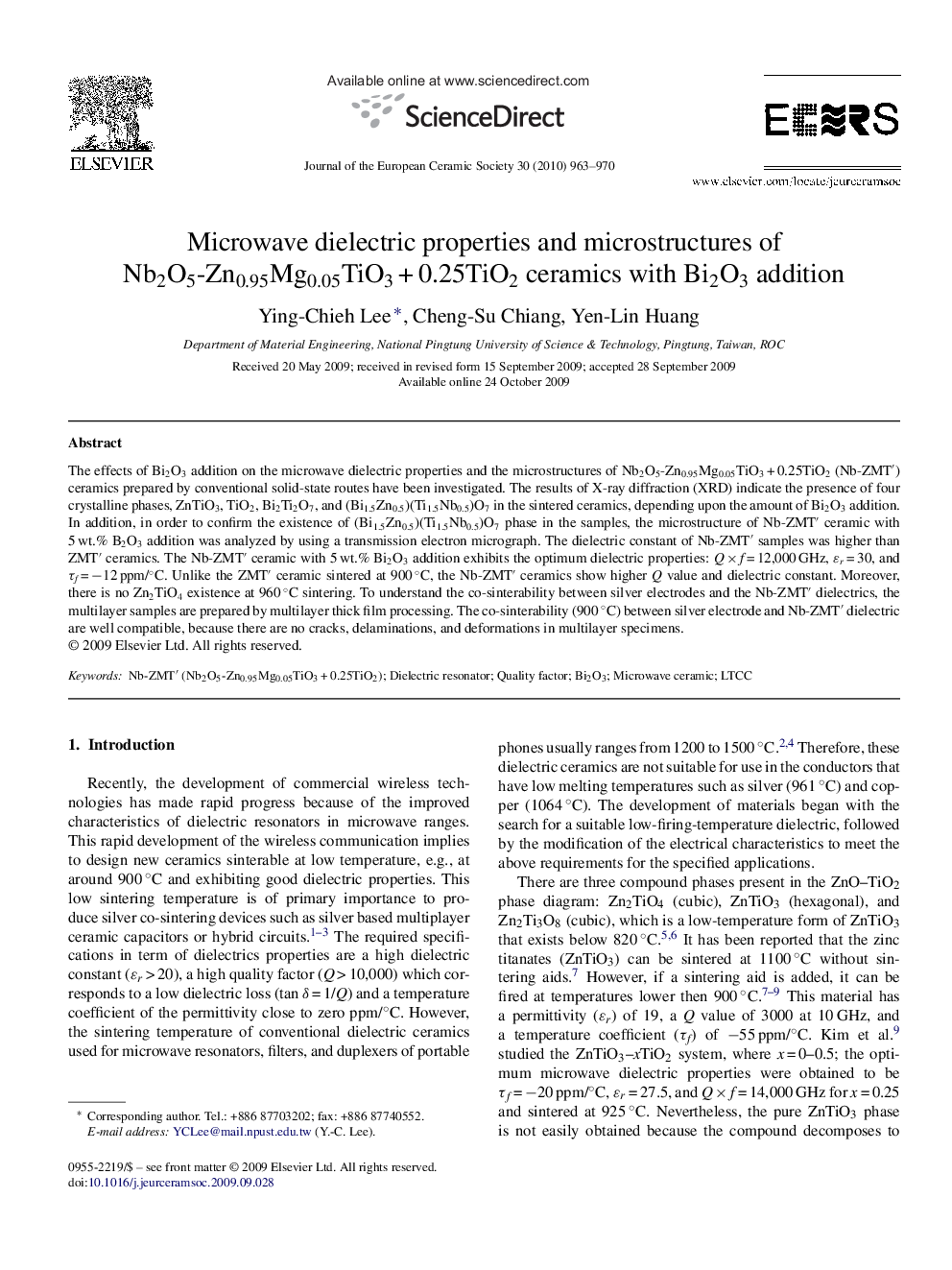| Article ID | Journal | Published Year | Pages | File Type |
|---|---|---|---|---|
| 1476246 | Journal of the European Ceramic Society | 2010 | 8 Pages |
The effects of Bi2O3 addition on the microwave dielectric properties and the microstructures of Nb2O5-Zn0.95Mg0.05TiO3 + 0.25TiO2 (Nb-ZMT′) ceramics prepared by conventional solid-state routes have been investigated. The results of X-ray diffraction (XRD) indicate the presence of four crystalline phases, ZnTiO3, TiO2, Bi2Ti2O7, and (Bi1.5Zn0.5)(Ti1.5Nb0.5)O7 in the sintered ceramics, depending upon the amount of Bi2O3 addition. In addition, in order to confirm the existence of (Bi1.5Zn0.5)(Ti1.5Nb0.5)O7 phase in the samples, the microstructure of Nb-ZMT′ ceramic with 5 wt.% B2O3 addition was analyzed by using a transmission electron micrograph. The dielectric constant of Nb-ZMT′ samples was higher than ZMT′ ceramics. The Nb-ZMT′ ceramic with 5 wt.% Bi2O3 addition exhibits the optimum dielectric properties: Q × f = 12,000 GHz, ɛr = 30, and τf = −12 ppm/°C. Unlike the ZMT′ ceramic sintered at 900 °C, the Nb-ZMT′ ceramics show higher Q value and dielectric constant. Moreover, there is no Zn2TiO4 existence at 960 °C sintering. To understand the co-sinterability between silver electrodes and the Nb-ZMT′ dielectrics, the multilayer samples are prepared by multilayer thick film processing. The co-sinterability (900 °C) between silver electrode and Nb-ZMT′ dielectric are well compatible, because there are no cracks, delaminations, and deformations in multilayer specimens.
